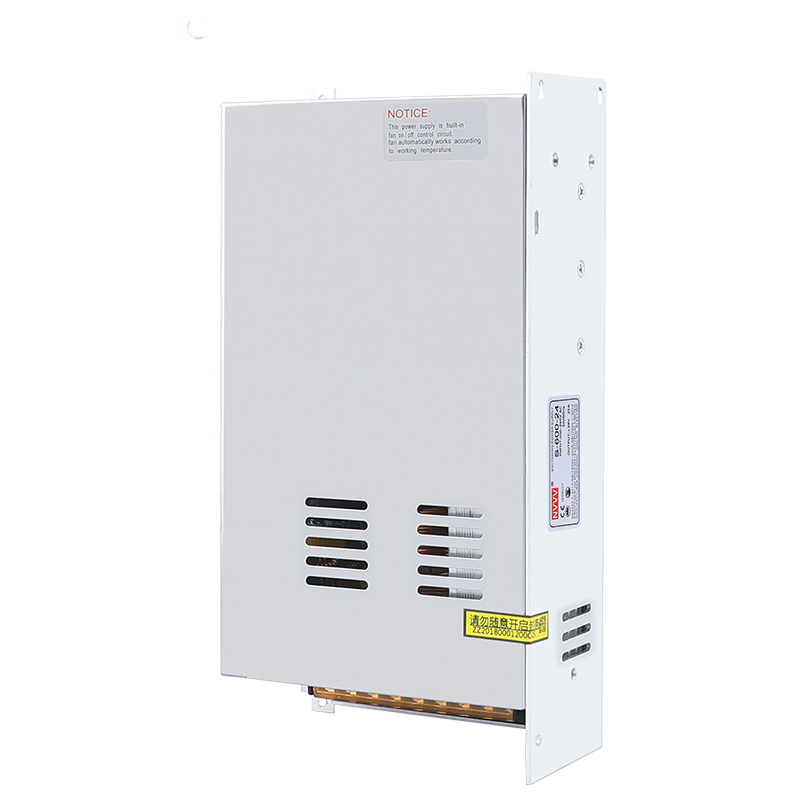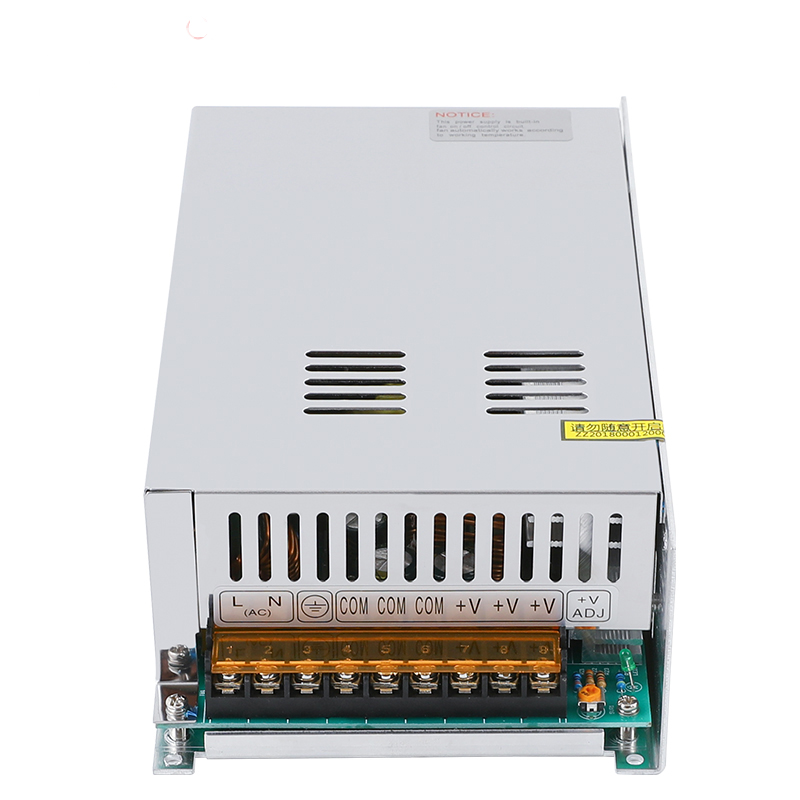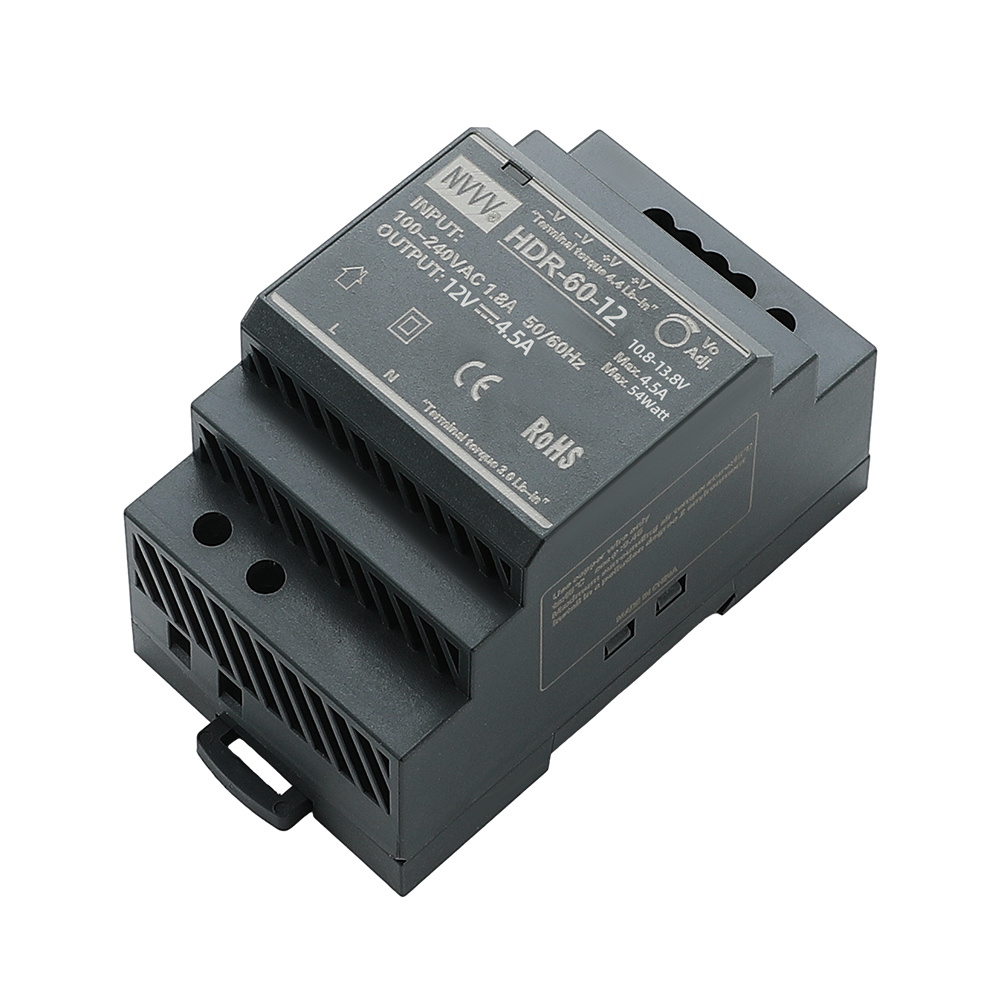Understanding Switched-Mode Power Supplies (SMPS): Everything You Need to Know
Switching-Mode Power Supply (SMPS) is one of the most important components in modern electronic devices. It plays the role of power supply in various electrical devices, from daily household appliances to industrial equipment to cutting-edge technology products, and is almost everywhere. So, what is SMPS? How does it work? Why is it so widely used in electronic devices? This article will explore the working principle, advantages and application scenarios of SMPS through several common questions to help you fully understand this key technology.
1. What is a switching power supply (SMPS) and how does it work?
A switching power supply (SMPS) is a power supply device that controls the conversion of electrical energy through high-frequency switching technology. Unlike traditional linear power supplies, SMPS uses the fast switching action of electronic switches to convert voltage to the required level and controls the stability of the output voltage by adjusting the duty cycle of the switch. This process involves multiple steps and circuit designs, as follows:
Basic composition of SMPS
A typical switching power supply mainly consists of the following parts:
Input rectification and filtering circuit: rectifies the input alternating current (AC) into direct current (DC), and smoothes voltage fluctuations through a filtering circuit to form a stable DC power supply.
High-frequency switch and drive circuit: High-frequency switch is the core part of SMPS. It converts DC into high-frequency pulse current by fast switching. The drive circuit controls the frequency and time of the switch, thereby adjusting the output voltage and current.
Transformer and isolation circuit: The high-frequency pulse current is converted into voltage through the transformer, and the transformer also plays the role of isolating the input and output to ensure the safety of the circuit.
Output rectification and filtering circuit: The current converted by the transformer needs to be rectified and filtered again, and finally outputs stable DC power for the load.
Feedback and control circuit: The feedback circuit monitors the output voltage in real time and transmits the data back to the control circuit. The control circuit maintains the stability of the output voltage by adjusting the switching frequency or duty cycle.
Working principle of SMPS
The core of the switching power supply lies in high-frequency switching technology. The input voltage is first rectified into DC, and then "cut" into a high-frequency pulse signal through a high-frequency switch. This pulse signal is converted into the target voltage through a transformer, and then rectified and filtered to form the required DC output. In this process, the operating frequency and duty cycle of the switch determine the level of the output voltage.
Compared with traditional linear power supplies, SMPS adjusts the output voltage by changing the switching frequency and duty cycle instead of simple voltage attenuation. This regulation method not only improves the conversion efficiency, but also reduces energy loss, making SMPS a better choice in most applications.
2. Why is switch mode power supply so widely used in electronic devices?
SMPS can be widely used in electronic devices, which is inseparable from its many advantages. Compared with traditional linear power supplies, SMPS is not only efficient and small in size, but also has better voltage stability and flexibility, and is suitable for various complex power supply needs.
High efficiency and low energy consumption
In modern society, energy efficiency has become one of the important criteria for designing and selecting electronic products. One of the significant advantages of SMPS is its high efficiency. Traditional linear power supplies adjust the voltage linearly, and the excess energy is usually consumed in the form of heat, resulting in a lot of energy waste. In contrast, SMPS adjusts the voltage through high-frequency switching, with minimal energy loss, and can usually achieve a conversion efficiency of more than 85%, and some designs can even exceed 90%.
For example, in the school's network laptop charging cabinet, SMPS can power a large number of devices in a more efficient way, reduce energy loss, and ensure charging stability. In addition, for devices such as 3D printers and embroidery machines that require continuous and stable power supply, the use of SMPS can reduce heat generation, improve power conversion efficiency, and ensure long-term stable operation of the equipment.
Miniaturization and lightweight design
With the continuous advancement of electronic products, the lightweight and integrated design of equipment has become a development trend. Due to its high-frequency working principle, SMPS can reduce the size of transformers and filters, making the power supply more compact and lightweight as a whole. Compared with traditional linear power supplies, SMPS not only takes up less space, but also provides higher output power while lightweight design.
For example, in the control system of a watering machine, the compact SMPS design can greatly reduce the size of the equipment while ensuring the stability of the power supply. This allows the watering machine to be flexibly deployed in different environments without worrying about the space and weight of the power supply system.
Excellent voltage stability and wide adaptability
SMPS has excellent voltage regulation capabilities and can maintain stable output even when the input voltage fluctuates. This is crucial for devices that require precise power supply, such as 3D printers and embroidery machines. These devices have very strict requirements on power supply, and even slight fluctuations in voltage may affect their working effect or cause failures.
In addition, switched mode power supply can adjust the output voltage and current according to different application scenarios to meet the needs of a variety of devices. Whether it is powering low-power electronic devices or supporting high-power industrial equipment, SMPS can adapt flexibly. This wide adaptability has made it widely used in various fields from home appliances to industrial automation control systems.
3. What are the typical scenarios of SMPS in practical applications? What is its future development trend?
SMPS has a wide range of applications, from consumer electronics to industrial control, communication equipment, to renewable energy systems, covering almost all areas that require power. Understanding its specific application scenarios can better understand the importance of SMPS in technology and the market.
Application in school network laptop charging cabinets and other educational equipment
In modern education, schools are increasingly using network laptop charging cabinets to centrally manage and charge a large number of student devices. SMPS plays a key role in these devices. It can provide a stable power supply for multiple devices while avoiding excessive heating and power waste generated by traditional power supplies. The efficient SMPS design ensures that the charging cabinet can work stably under high load and extend the service life of the equipment.
In addition, SMPS is also widely used in school projection equipment and smart classroom systems. These devices have high requirements for power supply, especially when multiple people use them at the same time, stability is crucial. By using SMPS, schools can ensure that all equipment can still operate normally during peak loads and will not cause equipment failures due to voltage fluctuations.
Applications in industrial equipment: 3D printers, embroidery machines, and watering machines
In the industrial field, equipment such as 3D printers, embroidery machines, and watering machines require not only high efficiency but also high stability for power supply. The advantage of SMPS is that it can provide precise voltage regulation to ensure that these devices will not fail due to unstable power supply during long-term operation.
For example, during the printing process, 3D printers require a continuous and stable power supply to ensure that the printing quality is not disturbed. SMPS can achieve fast response and maintain accurate and stable output voltage through high-frequency switching technology. For embroidery machines, SMPS can provide continuous power output for the motor to avoid inaccurate needle movement due to voltage fluctuations, thereby ensuring embroidery quality.
The application scenario of watering machines is more complicated. When running in the field or greenhouse, the stability of the power supply directly affects the irrigation effect. In these systems, SMPS can intelligently adjust the output voltage to ensure that the pumps and sensors always operate in the best condition, improve irrigation efficiency, and save resources.
Future development trends: more efficient and smarter
With the advancement of technology and the continuous changes in market demand, switched-mode power supply is also evolving continuously. In the future, the technical development of SMPS will focus on the following aspects:
Higher efficiency and environmentally friendly design: Future SMPS will pay more attention to improving efficiency and reducing energy consumption, especially in low load and standby mode. Through the application of new materials and technologies, such as gallium nitride (GaN) and silicon carbide (SiC), the energy efficiency of SMPS will be further improved and the size will be further reduced.
Intelligent and digital control: With the popularization of the Internet of Things (IoT) and smart devices, SMPS will integrate more intelligent functions. Future SMPS will be able to monitor and optimize output in real time, and automatically adjust according to changes in load conditions and external environment. Through intelligent management, SMPS can achieve higher energy efficiency and more precise voltage control to adapt to more diverse application needs.
For example, in the school's network laptop charging cabinet, the future SMPS will be able to intelligently adjust the output power according to the actual charging needs to avoid overcharging or unnecessary energy consumption. For equipment such as 3D printers and embroidery machines, intelligent SMPS can monitor the working status of the equipment in real time and automatically adjust the power output when the load fluctuates to ensure consistency and high precision in the printing and embroidery process.
· Modular and customized design: With the improvement of equipment integration, the future SMPS design will pay more attention to modularization and customization. The modular design allows users to combine different power modules according to specific needs, achieve multiple voltage outputs, and meet the power supply needs of different equipment. For example, a watering machine may require multiple voltages to support different sensors and water pump systems. Through modular design, SMPS can be flexibly configured to provide customized power solutions to adapt to various complex agricultural application scenarios.
In addition, customized design will meet the special needs of specific industries or equipment. In fields such as medical equipment, aerospace, etc., the reliability and stability of the power supply are extremely high. Through customized SMPS design, higher safety guarantees and longer service life can be provided.
· Enhanced electromagnetic compatibility (EMC) and heat dissipation: Future SMPS will further improve its adaptability in complex environments, especially the suppression of electromagnetic interference (EMI) and the optimization of heat dissipation. In modern electronic devices, electromagnetic interference problems are becoming more and more common, especially in high-power and high-frequency devices. EMI management directly affects the performance and stability of the device. Through more efficient shielding design and improved heat dissipation solutions, future SMPS will be able to maintain low temperature and low noise operation while high power output, ensuring long-term stable operation of the system.
Conclusion
As the most common 24 vdc power supply technology in modern electronic devices, switching power supply (SMPS) has been widely used in various fields due to its high efficiency, miniaturization and stability. From school network laptop charging cabinets, 3D printers, embroidery machines, to irrigation machines in agricultural applications, SMPS can not only provide stable power support, but also help equipment improve overall performance and energy efficiency. With the continuous development of intelligent, modular and environmentally friendly design, SMPS will play a more important role in future applications.
Whether in education, industry or agriculture, SMPS has shown irreplaceable advantages. Through continuous optimization and innovation, the future SMPS will be more intelligent, efficient and environmentally friendly, providing better power solutions for various devices.
When selecting and using SMPS, users should reasonably configure and optimize the power system according to specific application scenarios and equipment requirements to ensure its optimal performance. At the same time, regular maintenance and inspection of SMPS equipment is also an important measure to extend its service life and ensure stable operation of the system. With the advancement of technology and changes in market demand, switching power supplies will continue to shine with new vitality in all walks of life, bringing us a more convenient, efficient and intelligent power experience.










